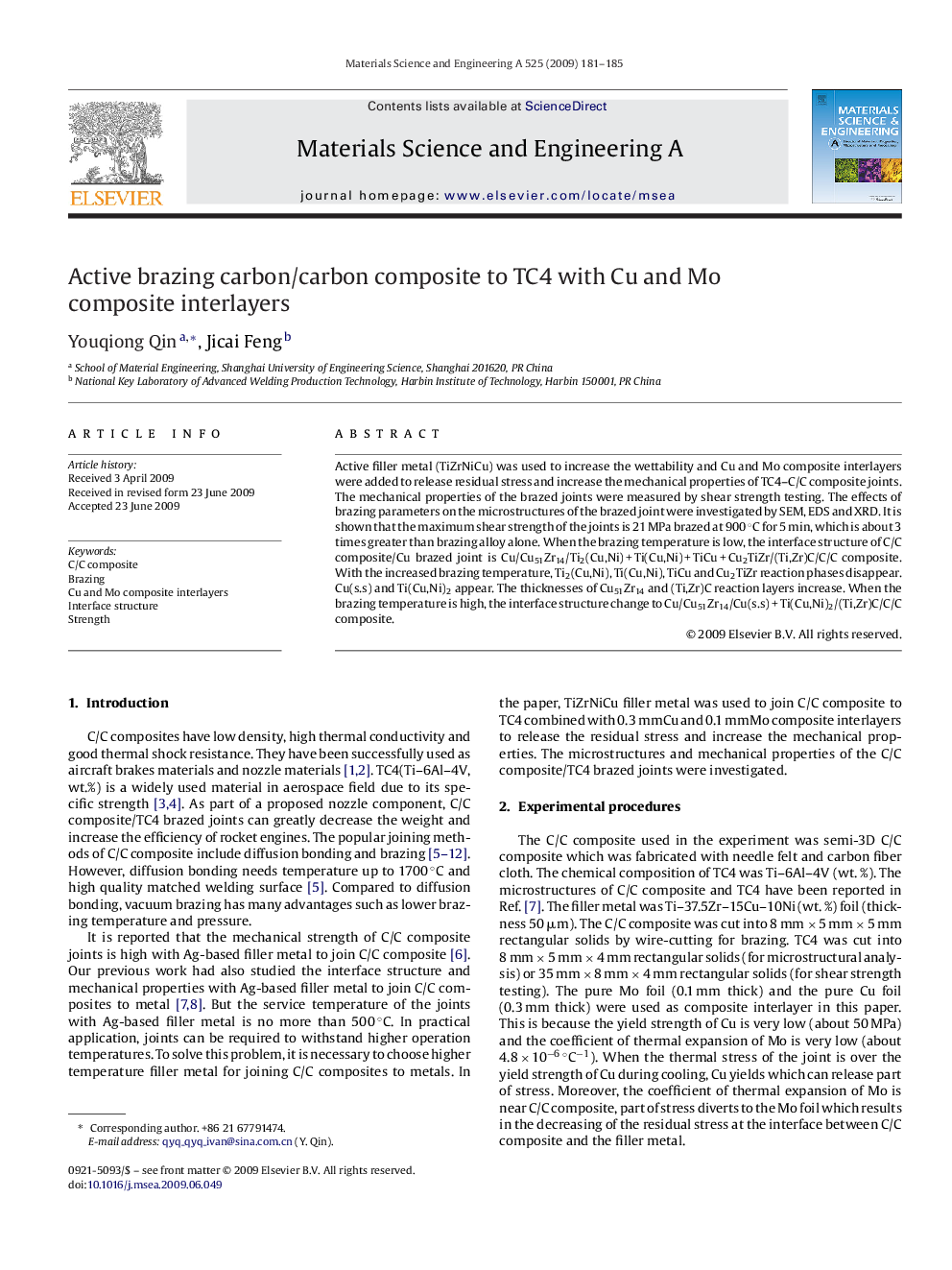| Article ID | Journal | Published Year | Pages | File Type |
|---|---|---|---|---|
| 1579793 | Materials Science and Engineering: A | 2009 | 5 Pages |
Abstract
Active filler metal (TiZrNiCu) was used to increase the wettability and Cu and Mo composite interlayers were added to release residual stress and increase the mechanical properties of TC4-C/C composite joints. The mechanical properties of the brazed joints were measured by shear strength testing. The effects of brazing parameters on the microstructures of the brazed joint were investigated by SEM, EDS and XRD. It is shown that the maximum shear strength of the joints is 21 MPa brazed at 900 °C for 5 min, which is about 3 times greater than brazing alloy alone. When the brazing temperature is low, the interface structure of C/C composite/Cu brazed joint is Cu/Cu51Zr14/Ti2(Cu,Ni) + Ti(Cu,Ni) + TiCu + Cu2TiZr/(Ti,Zr)C/C/C composite. With the increased brazing temperature, Ti2(Cu,Ni), Ti(Cu,Ni), TiCu and Cu2TiZr reaction phases disappear. Cu(s.s) and Ti(Cu,Ni)2 appear. The thicknesses of Cu51Zr14 and (Ti,Zr)C reaction layers increase. When the brazing temperature is high, the interface structure change to Cu/Cu51Zr14/Cu(s.s) + Ti(Cu,Ni)2/(Ti,Zr)C/C/C composite.
Related Topics
Physical Sciences and Engineering
Materials Science
Materials Science (General)
Authors
Youqiong Qin, Jicai Feng,
